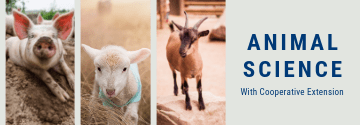As part of a larger small ruminant health grant, please join us on the evening of November 5, 2015 at the Paradee Center in Dover, Delaware for our initial workshop in a series of health related workshops to focus on vital signs and health assessments and recognizing the signs and symptoms of pre-parturient diseases (diseases of pregnant ewes/does) and diseases in lambs and kids. Our featured guest speaker for the evening will be nationally recognized expert on small ruminant veterinary care, Dr. Wendy Freeman, VMD.
Dr. Freeman graduated from the University of Pennsylvania Veterinary School in 1985. After graduation, Dr. Freeman completed an internship and residency in Field Service at the University of Pennsylvania New Bolton Center in 1988. Following her residency, Wendy joined the faculty at New Bolton Center and became Assistant Professor of Medicine and Field Service in 1992, where she worked on developing and directing the small ruminant program. Dr. Freeman directed the reproductive program and implemented total health care and clinical studies of the teaching flock. Wendy is one of the most experienced small ruminant specialists in the United States and sees both large and small animal patients at Longwood Veterinary Center in Kennett Square, Pennsylvania on a full-time basis.
The Small Ruminant Health Program is a project developed by University of Delaware extension professionals Susan Garey and Dan Severson in response to a deficiency of veterinarians in the region with the desire to treat small ruminants. As a result, producers need to further develop their skills in assessing animal health and treating common diseases. A Risk Management Grant Proposal was funded by the Northeast Extension for Risk Management Education Center to develop the project. A needs assessment was completed to determine needs for technical training and skill development. If producers can develop knowledge and skills in assessing animal health, recognizing disease symptoms, determining treatment and performing treatment skills, producers can ultimately reduce mortality rates increase productivity of their flocks and herds.
For questions or to register for this free workshop, please contact Susan Garey, Extension Agent Animal Science, University of Delaware (302)730-4000 truehart@udel.edu or Dan Severson, New Castle County Extension Agricultural Agent, (302)831-8860 or severson@udel.edu If you have any special needs in accessing this program, please let us know two weeks in advance.
Cooperative Extension Education in Agriculture and Home Economics, University of Delaware, Delaware State University, and the United States Department of Agriculture cooperating. Distributed in furtherance of Acts of Congress of May 8 and June 30, 1914. It is the policy of the Delaware Cooperative Extension System that no person shall be subjected to discrimination on the grounds of race, color, sex, disability, age, or national origin.
This material is based upon work supported by USDA/NIFA under Award Number 2012-49200-20031
Click here for the full brochure for the Small Ruminant Health Workshop







